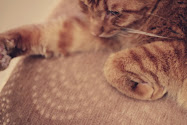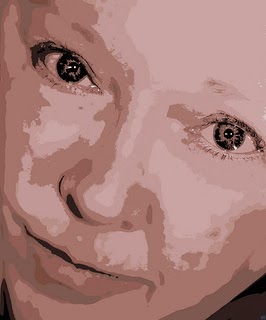The Nature Notes challenge at Michelle's blog asks us to take a walk around and see what's going on outside, to pay attention to things we might not have noticed before. Actually, I noticed this five-foot-tall shrubby thing weeks ago, but had never trekked out through the tall grass for a closer look. I figured it was a diseased milkweed. But no. This is a real rarity, a variegated pokeweed.
We have plenty of pokeweed around here, but this is the only plant I have ever seen with variegated leaves. It took some quality time with Google to be sure, but that's what it is all right. A variegated pokeweed.
What I also discovered is that poke is seriously poisonous. Only the earliest leaves can be eaten, and those have to be boiled a couple of times to reduce the toxins. Once the stems are red, it's too late. The leaves, flowers and berries are all bad news, and the roots are even worse. The plants are poisonous to turkeys, horses, pigs, sheep, cattle and humans, but are apparently an important food for mourning doves. (Go figure.)
Now, when I was a kid in the south, spring was poke salad season. We never ate it ourselves, but when the weed cropped up around my grandmother's garden we literally put it in a paper poke and took to Mrs. Smith down the block. She loved the stuff. I hear it is available at farmers markets now, and that there are festivals dedicated to poke. It's supposed to be a lot like cooked spinach, so I can't fathom its popularity. To each his own, I suppose.
The more I explore around here, the more wild things I find that are edible. The morel mushroom is a standout. Black walnuts are awesome. And I love stopping the car at the end of the driveway to hop out and pick a handful of blackberries on my way in from work. But I think I'll pass on the pokeweed.

Click here to see more Nature Notes.













